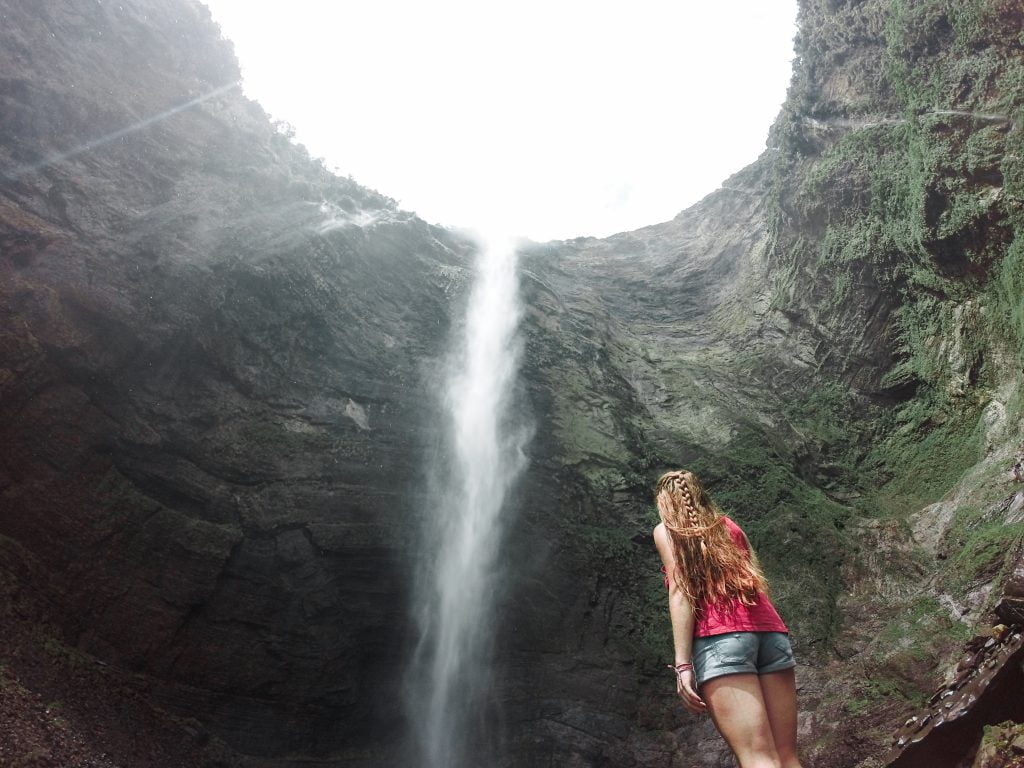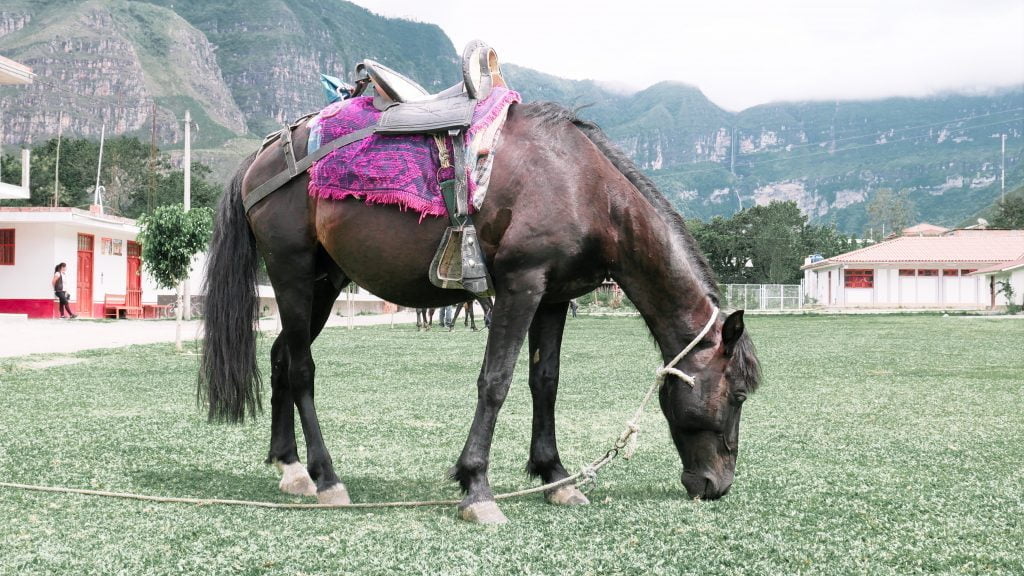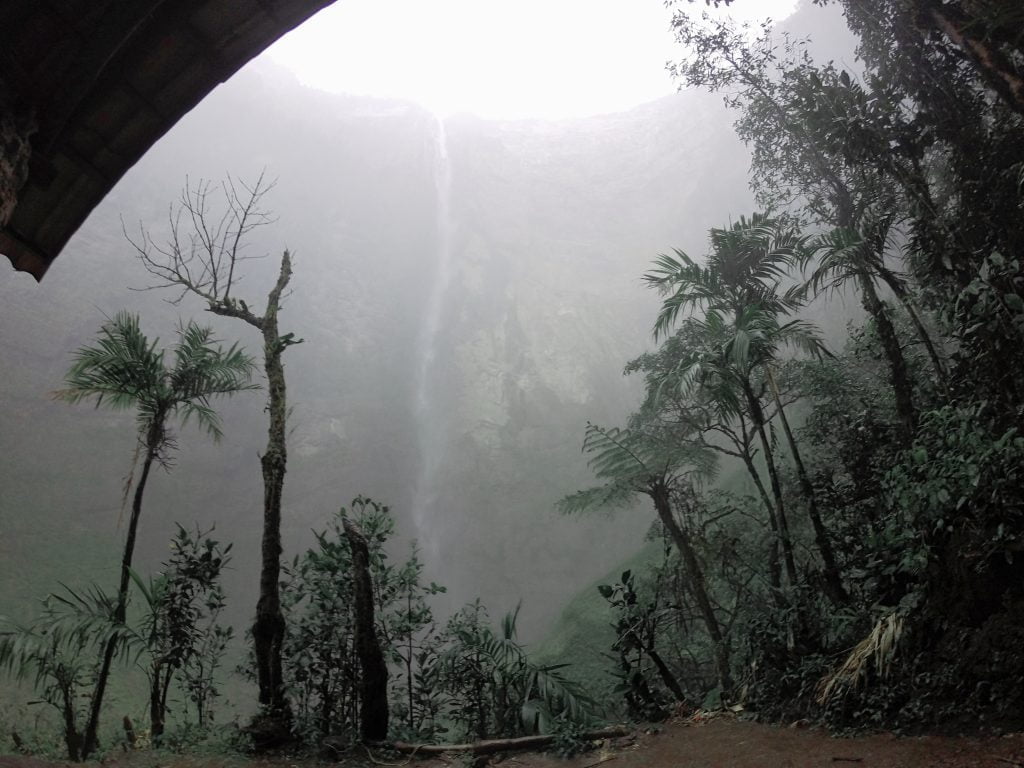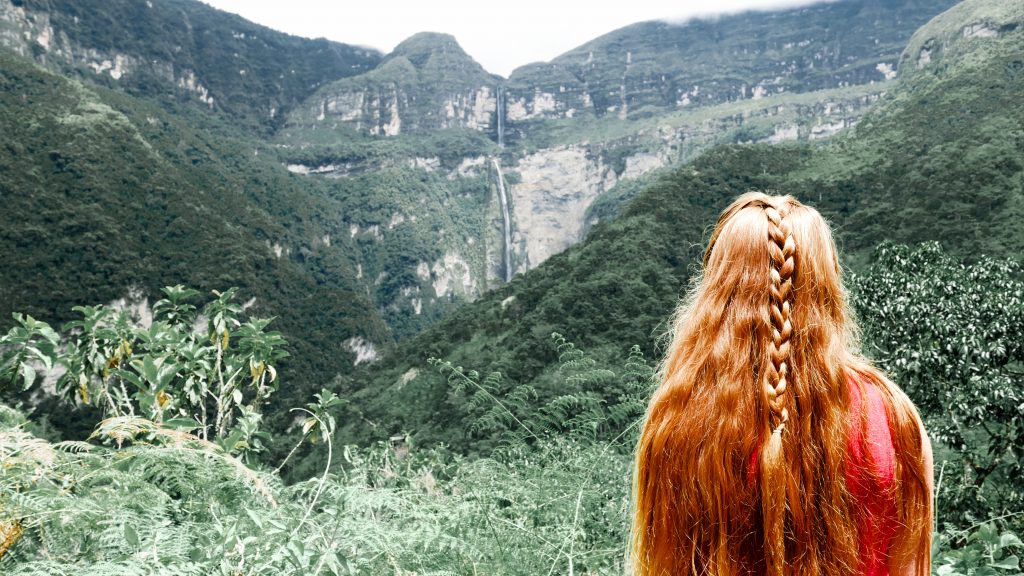Water plunges 771 meters (over 2,500 feet) off the top of Gocta Waterfall, making it one of the tallest in the world. We weren’t quite sure what to expect when we left Chachapoyas in search of the waterfall, but standing directly at its base with a roaring echo and a whirlwind of mist surrounding us was pretty magnificent. There are incredible sights to see in the Amazonas region in Peru, and Gocta should definitely be on your list.

The Way to Gocta Waterfall
Our tour van set out from Chachapoyas at 9:00 a.m., heading for the jungle. On our way, we stopped in the sleepy town of Cocachimba to place our lunch orders for after the hike. Once reaching the trailhead, the group immediately broke up, some of us hiking ahead and others falling behind. There is an option to pay a small fee to take a horse for the first section to make it past some of the steep climbs on the 7-mile round-trip hike to the falls.

The sun and slight humidity made the climb pretty warm, and as the sun grew higher, the sounds of the birds and insects made the jungle come to life. The trail was pretty up and down, but nothing too strenuous. Our guide stopped frequently to let the group members catch our breaths and admire Gocta in the distance from the miradors. We crossed bridges and creeks, passed caves, and enjoyed the dense jungle.

Just over half way into the hike, we came across a small village where there were restrooms and where those riding horses had to get off to walk the rest of the way. Up we went, the waterfall growing close and the dark clouds even closer. Just around the corner from Gocta Waterfall, the sky unleashed a downpour of raindrops with booming thunder and lightning overhead. Everybody made a run for it, huddling under a small shelter at the base of the falls.

Experiencing Gocta
After a short time, the rain cleared and we made our way down to the base of Gocta. The waterfall swung side to side as the winds changed the path of the stream plummeting from the drop above. The sun came out again, turning the water into a glistening ribbon.
Little did we know, swimming was allowed at the base of the cataract. We weren’t prepared to swim, but a few individuals jumped into the chilly water. About 45 minutes were spent admiring the scenery, snacking, and taking photos before the group gathered to head back.

We trekked back, sticky from the humidity, and the group separated as everybody hiked at their own pace. We found ourselves in another rainstorm, and a woman invited us to wait it out under her balcony. Like the last storm, this one was brief, and the sun soon broke through the clouds again as we strolled into town.
After the whole group arrived back where we started the hike, we enjoyed a local lunch of trucha (trout) and pollo con arroz (chicken and rice) at the tour-organized restaurant. We then made the drive back to Chachapoyas.
Notes on Visiting Gocta Waterfall
If you are into nature and hiking, this is the adventure for you. Due to the moderate hike, it seemed to be less busy than some of the other attractions in the area, like the ancient hilltop fortress of Kuelap. Take plenty of water, a rain jacket, and shoes that can get a little muddy. And if you’re up for a swim, don’t forget your swimsuit!

As with many attractions in the area, you can reach Gocta on your own. Buses leave daily from the main bus terminal in Chachapoyas and will drop you just down the hill from Cocachimba. For the return, just flag down a colectivo or bus heading back to Chachapoyas. When visiting on your own, you can pay the S/10 entrance fee to the falls upon arrival.
To see Gocta Waterfall, we opted for a tour, which included lunch, transport, a guide, and the entrance tickets for about $30 (USD) for the both of us. For a Gocta tour, an English-speaking guide isn’t necessary, though it is helpful and cool to learn some things about the area from your guide. For more information on tours and Chachapoyas, see our guide to the city.
Like this Post? Pin it!




